#monster ecologies
Text
Monster hunter be like:
Huh what? Yeah no i dont care about whatever plot you’re tryin to whip up here idk whats goin on just show me godzilla and let me poke him with a stick
#at least for me#i mean i ADORE the ecology#but at the end of the day im here for the armor fashion and monster designs#im going to poke godzilla with a stick#let me be FERAL#monster hunter
292 notes
·
View notes
Text
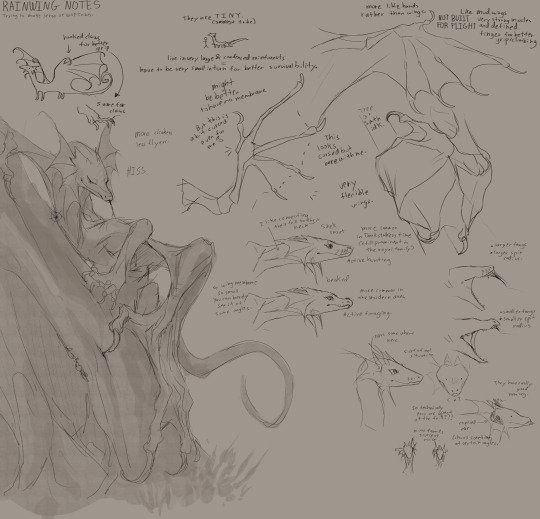
Trying to make sense of WOF tribes: Rainwings
(click image for better quality)
#wof#wings of fire#wof fanart#my art#wof notes#Trying to make sense of WOF tribes#wof rainwing#rainwing#rainwings#apologies if my handwriting is a bit difficult to read#I enjoy reading little ecology tidbits#especially fantasy ones#I always love it when media tries to make sense of their monsters and creatures from a biological standpoint#Monster hunter has done a number on me.#so this is me trying to make sense of Rainwings from a biological standpoint#with my very limitied biology knowledge#me making up for WOF's lack of tribe details#Making sense of WOF
990 notes
·
View notes
Text


As a late celebration of the 20th Anniversary of monhun, I decided to update my skulls of the Raths
#skulls#art#rathalos#rathian#speculative biology#speculative evolution#speculative anatomy#speculative zoology#speculative ecology#monster hunter#monhun#monsterhunter#monster hunter biology
98 notes
·
View notes
Text
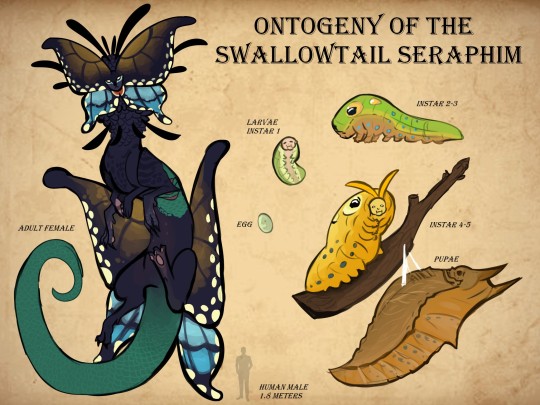


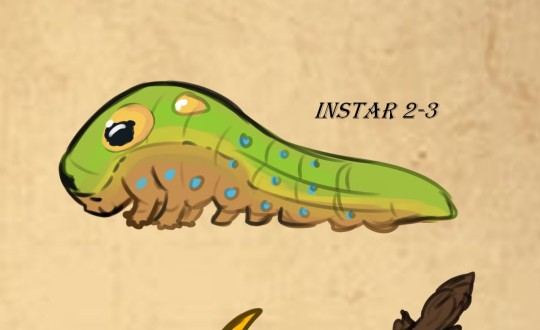
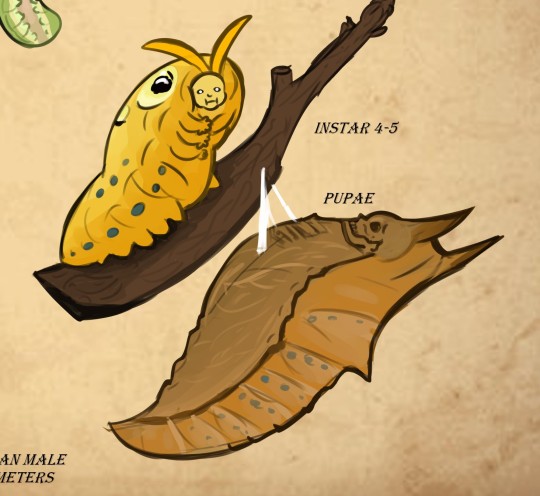
Seraphim are anomalous creatures that inhabit the InBetween.
They exhibit mammalian features such as homeothermy, fur, feathers, and the ability to lactate. However, they follow a life cycle similar to insects.
When seraphim pupate, they form a cocoon around their soft bodies. Over the course of about 20 years, the muscles and soft tissue will break down and reshape. The only part of the body that does not melt are the bones, which remain mostly intact through the entire metamorphosis.
#creature art#creature design#speculative fiction#speculative zoology#creature#fangssart#monster design#original species#speculative evolution#speculativedesign#speculative biology#speculative design#speculative ecology#speculative writing#body horro tw#body horrow cw
944 notes
·
View notes
Text

Rathalaugust 2023 (catchup) day 21: Fulgur Anjanath
I combined my love of Anjanath chilling with its sail up with the apparent lore that the babies are fully feathered (before they lose much of it as adults).
#rathalaugust2023#monster hunter#anjanath#fulgur anjanath#kobb art#sketchbook#for some reason a lot of people diss standard anjanath but I love it also#there's just a lot of cool behavior it has#it's a great single example of the way MH World was designed re: the way it focuses on ecology & interaction with the game environment#the way its nose expands into an eldritch horror and the mucus relates to its limited fire abilities AND the traces you can track#you can follow it around and *watch* it marking its territory by snorting flammable boogers on it#underrated friend
224 notes
·
View notes
Text

"... Frayed are not born in a way we would define birth...at their core they are a monster. Though some circumstances leading to a Frayed's creation may be sympathetic or tragic they will gradually disrupt the ecological balance in the area and push many creatures- not just sentient beings- out....
The Fabric of the Universe is fickle and all of the worlds creatures are subjected to the whims of an ever shifting cloth."
#Calibreon#the frayed#frayed#worldbuilding#Actual beastie and monster#I never quite enjoyed any adventure to go 'kill a monster' that was nothing more than an animal doing what animals do#so I tried to make something that specifically was monstrous and could not coexist even naturally in any setting#as it would be a detriment to the natural ecology around it#not just people or farmland but typical animal populations too#Also frankly I love a good body horror#body horror tw#tw body horror#art#artwork#drawing#illustration
145 notes
·
View notes
Text

Hayao Miyazaki's Nausicaä of the Valley of the Wind turn 40 today. Feel old yet ?
#nausicaä of the valley of the wind#hayao miyazaki#japan#anime#japanime#ecology#80s#80's#1980s#mid 80s#1984#bugs#monsters#nature#cinema
67 notes
·
View notes
Text
I just had a fucking realization...


#dungeon meshi#dunmeshi#delicious in dungeon#laios touden#dnd#dimension 20#brennan lee mulligan#fantastic leader? Check#intimate relationship with food? Check#highly intelligent about specific interest? Check#fascinated by monster/animal ecology? Check#Unhinged? Check#Y'all see the vision right!?#I'm not crazy right!?
144 notes
·
View notes
Note
any encounters with the nargacuga?

there Was the time back when Frosting was with the commission and researching monsters

#he hands in his notes to ecological research and it includes ''nargacuga's fur is bristly and not very soft''#the guild nods in response. this is exactly what they expected when they let him become odessa's handler#modzutsune#memories 📷#; frosting#; odessa#monster hunter#cohoot mail 🦉#hunters journal 📖
120 notes
·
View notes
Text

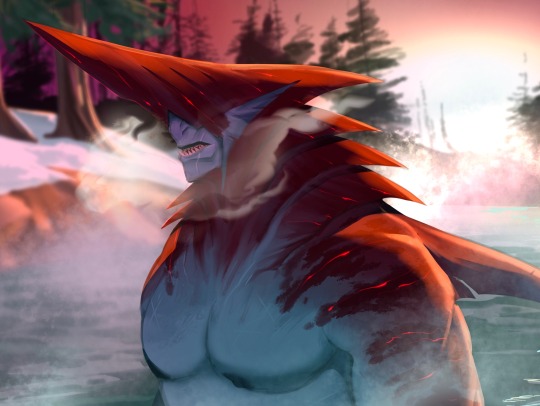
Serkan emerging from a steamy hot springs dip.
#probably an ecological nightmare#monster art#sea monster#hot springs#fantasy art#serkan#I feel like sea monster is lying but he’s an ocean hunter at least#been trying to write more but I also want to DRAW
428 notes
·
View notes
Text

The Gunslinger spider
Name pending
Species: Temnoceran
My first ever monster hunter monster oc! inspired by boleadora spiders, this large monster keeps a herd of common prey monsters (such as aptonoth) within its territory in order to attract the flying wyverns it preys upon (and as livestock in case of emergency); extremely territorial about its herd, will not just attack its preferred prey but also anything that threatens them.
The boulders it stacks in its back and webbed bag act both as natural armor and camouflage as well as its ammo, as it attaches the rocks to threads of silk in order to hurl them at its prey both to knock it down and to entangle and pull at it.
Around its mouth there are pores that produce threads of silk which help detect vibrations in the air, and also can be combined with the sticky substance produced by its fangs (gets more viscuous when in contact with air) to quickly weave threads in the middle of a fight.
There are accounts of older and more experienced individuals using smaller, ignitable stones with its front limbs to directly engage opponents in close combat, causing burns and concussions from the blasts (an action very reminiscent of one of Qurupeco's abilities, perhaps these older individuals have engaged in fights with them? to predate them or to take advantage of their call?)
#monster hunter#monster hunter oc#monster hunter monster oc#monster oc#temnoceran#spider#mebi's art#digital art#krita#rkgk#spec evo#speculative biology#speculative ecology#this is also inspired by cowboys if it isnt obvious lol
129 notes
·
View notes
Photo

variations on a theme (of legiana)
been playing a lot of mhw/mhs2 lately alongside listening to the mh ecology videos which got me thinking about morphological variations. i like to imagine that juvenile legis are beakier (bottom left/top right) and transition to the more “standard” appearance (bottom right) as they gain size/bulk with maturity. still think they’d utilize talons over bite force but the ability to pick meat off with precision becomes less important as they grow (???). at least in the new world where they dwarf the barnos they prey on.
anyway my personal mhs2 legi is the top right shes built for speed
#monster hunter#legiana#mhw#mhs2#mh#dalton.txt#my art#gonna make a tag for#mh ecology#bc i play this game so much i think i will continue talking about it in the future#seabrrd.png
734 notes
·
View notes
Text
youtube
Here’s the skulls I made for the vid!

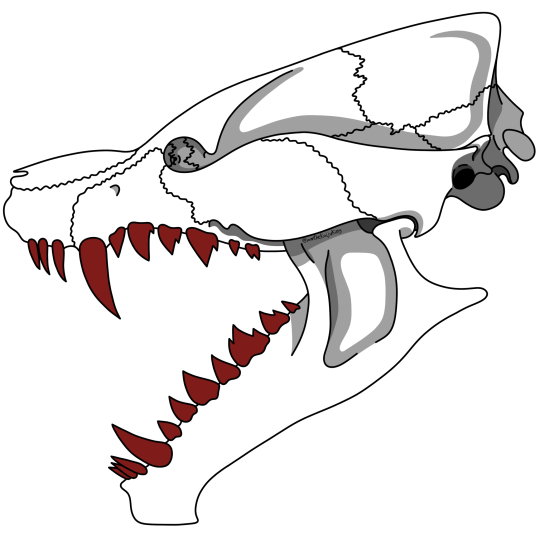
For garang I used Gorillas and Macaques for reference, and for luna I used members of Hesperocyoninae for reference because that’s what I think it is, but like with most things in monhun its phylogenetic placement in the tree of life is kinda subjective.
I don’t have much to say about garang other than, aside from a missing pair of premolars on the mandibles, the dental formula matches perfectly with primates.
I do have more to say on luna however. The pronounced snout arch makes me think Lunagaron might deal with a lot of bite stress and have a very powerful bite. There’s also the long teeth and notch in the tooth line on the upper jaw, which are obvious adaptations for fish eating, but the robustness of the teeth and the iron reinforcement makes me think luna might be more like a cursorial phytosaur or otter, able to eat a wide assortment of things but perfectly capable of eating slippery stuff and being able to crack open armored prey like turtles or mollusks.
I know in the past I’ve said I think luna might have had more aquatic ancestors, and while that’s possible, it’s probably more likely that this trend towards aquatic-ness is actually new. I actually brought up the semi-aquatic luna theory to UHC.
I still stand by a few things I’ve said here such as the thick tail partially being due to fat stores and the scales helping with hydrodynamics and the immune system, but I’m not really sure about luna having one set of teeth anymore.
#youtube#monster hunter#speculative biology#speculative evolution#monsterhunter#monhun#monster hunter biology#speculative anatomy#speculative ecology#speculative zoology#lunagaron#garangolm#monster hunter sunbreak#uhc#unnatural history channel#skulls
91 notes
·
View notes
Text

a caring Father!
just a art of a Male Fulgur Anjanath feeding his babies nothing special i just love making ecology arts, the juveniles while its not noticeable cause im shitty at drawing but they are obviously inpsired by Juvenile T rexes having a thinner body longers arms and longer legs much more build for speed compare to the bulky adults!
im happy with how it looks and i always enjoy drawing my all time favorite monster! if you have any thoughts on it you can reply your thoughts down here!
#monster hunter#monster hunter ecology#brute wyvern#fulgur anjanath#speculative biology#speculative ecology
111 notes
·
View notes
Text
HE SHOULD HAVE BEEN IN BIOLOGY CLASS WITH ME

29 notes
·
View notes
Note
Do you think Shara Isvalda and Gaismagorn often have fights?
These two are, if I'm not mistaken, the only two big monsters that live most of the time underground and although I don't think they feed on the same. Shara feeds on bioenergy and Gaismagorn uses the Qurio to absorb nutrients (not sure about this)
I forgot Kulve Taroth, she also lives underground, so I guess they had fights too.
Although maybe not because they don't live on the same continent. Apart from Kulve and Shara.
I would like to theorize that Gaismagorm is technically a Deep Sea Elder Dragon, not an Underground Elder Dragon given its dens location.
It's probably best to explain how bioenergy and dragon energy work to explain the feeding methods of both Shara Ishvalda, Gaismagorm and the beginnings of Xeno Jiiva.

Bioenergy (or dragon energy) is everywhere, in the water, in the earth and in the air we breathe. It flows throughout the world.
Xeno'Jiiva are born when this energy coalesces in one spot like a whirlpool. Shara Ishvalda meanwhile are drawn to the natural flow of this energy so they move with the flow of the bio energy underground and take root where it is most prevalent at the time. These two instances often occur after a large elder dragon has died.
Gaismagorm is a different beast.
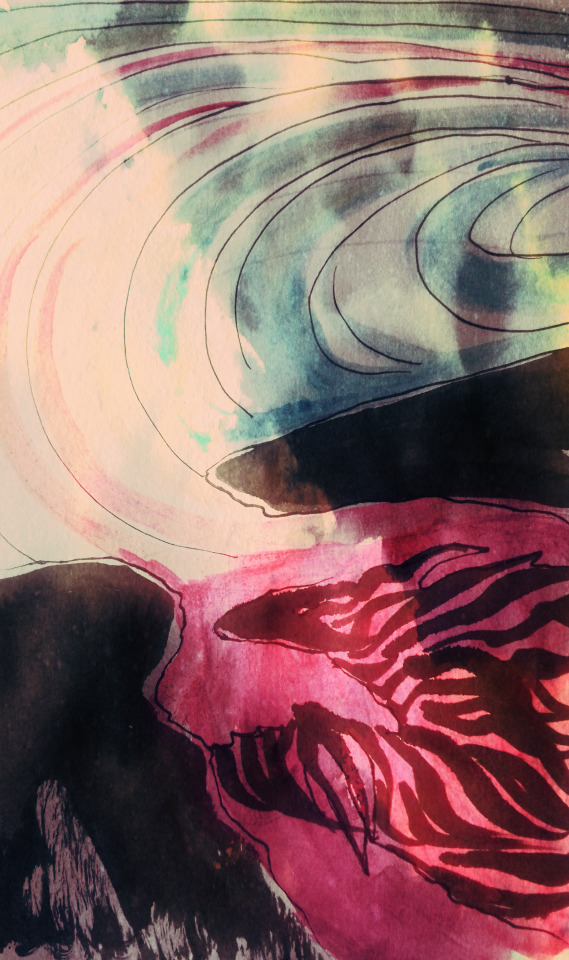
Gaismagorm was, and possibly still is, an ambush predator for deep sea elder dragons. Instead of supping on bioenergy - it sends out scouts of a sort in waves that we have grown to know as:

The Qurio.
A relatively simple life-form in the shape of a fish that could flutter around with bright colouration to lure prey. One could say that they are actually the closest in biology to a Xeno'Jiiva, as both are comprised of bioenergy.
The Qurio were Gaismagorm's lure for elder dragons like Ceadeus; a means of attracting these dragons to the cave of Gaismagorm so that the dreaded devil could grab them with its great arms and pull them into its lair to feast.
But over time, creatures tend to get wise to one's tricks, so it's a question of adapt or die. So the Qurio became parasitic leeches that would drain bioenergy from other elder dragons to give to Gaismagorm. They grew more complex, powered by Gaismagorm to find and hunt down prey instead of just luring it.
But seas can run empty, and when they do - new sources must be acquired. So the Qurio began to fly. Thus began the plague on air and land.
...and how they found the species of Elder Dragon called Malzeno.
Unlike most other monsters, Malzeno were not drained but instead gained a symbiotic relationship with the Qurio, essentially leeching Gaismagorms' bio energy for themselves through the Qurio.
However, I am getting off topic.
You want to know if Gaismagorm and Shara Ishvalda fight and how often.
I would say no.
Shara Ishvalda prefer arid areas and mountains, whereas Gaismagorm is going to be underground under entire oceans and seas. The two simply would not meet unless there was a large source of bioenergy between their individual biomes that was too irresistible for either to ignore.
-Leo Briarworth
To piggyback off of Leo's theory, it could be surmised that the Qurio started out as single-celled organisms during the time that Gaismagorm as a species dwelled in oceanic trenches, where light can't easily penetrate except in very specific forms and down to a certain depth. You see, taking a close look at the Qurio themselves, they give off a peculiar red glow. It's something that we can pick up on easily at a glance, something that monsters can see and follow above the ocean's depths... but past around 4.6 meters below the surface, red light begins to be absorbed as light waves are scattered.
In the deep ocean, there are creatures that use light to hunt, luring prey with a nice, shiny promise of food that sometimes glows to scare off smaller, less capable predators. In this same vein, light can be shown on prey that most creatures wouldn't be able to detect otherwise. It isn't too much of a stretch to assume that this same principle was followed before Gaismagorm eventually made the transition from sea to land, when the Qurio were still parasites that fed on Gaismagorm and the nutrients it processed as it, too, fed.
Eventually, in time immemorial, though... something changed. Gaismagorm as a species grew and their prey didn't, so they continued to adapt, and so did their parasites to this ever-changing biome whilst they worked their way up the food chain. Eventually, fish and other creatures that lived in the ocean just weren't enough, so the species both had to broaden their horizons or die. Fins became legs, legs became wings, gills that filtered oxygen from the water became lungs and vents to expel waste and excess, unusable energy.
It could be assumed that they were out-competed in the air, so then they adapted to food they could reach without expending so much energy. Once aquatic, then aerial, then subterranean... it's a massive leap and seemingly a step backward evolutionarily, but the structure of Gaismagorm's larger pair of arms suggests that they were once wings and simply evolved into powerful limbs, too heavy for flight but perfect for tunneling through solid earth and stone. Down in giant tunnels, they didn't need powerful hind legs for taking to the skies, so those became vestigial, Gaismagorm's eyes shrank as an adaptation to low-light conditions, and the Qurio, their parasites... developed wings from fins used to swim through water and their host's innards.
We might never know what led Gaismagorm to start creating exit points in the ground for the Qurio to find their way out and feed, but somewhere down the line, the behavior was sparked and a new pattern of hunting was born. Gaismagorm, too large to easily leave their tunnels, had to find food somehow, so they began to rely on the Qurio, which in turn began to treat their host as a hive. They began to leave its body, taking to the skies, hunting down and draining precious lifeblood from monsters up topside, then returning to Gaismagorm to feed it what they'd stolen.
From there, the Gaismagorm could (and can) process the blood into something that the Qurio can eat--a form of energy expelled by the elder dragon, a waste product, pure and filtered down into everything that it can't use but they can.
In the simplest of terms, think of the Qurio as Bnahabra or Vespoids, feeding their larvae meat so that they can create a protein-rich slurry that they can actually digest. It's the same principle; both species rely entirely on each other to survive.
-Oleander
#monster hunter#monster hunter rp#monhun#monster hunter ecology#monhun rp#monster hunter rise#mhr#mh sunbreak#gaismagorm#malzeno#shara ishvalda#qurio
98 notes
·
View notes